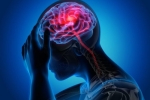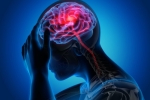Home » Blog
| Stem Cell, PRP, Acupuncture in Queens & Long Island, New York
Blog | Stem Cell, PRP, Acupuncture in Queens & Long Island, New York
Everyone experiences occasional aches and pains. Sudden pain is an important reaction of the nervous system that helps alert you to possible injury. When an injury occurs, pain signals travel from the injured area up to your spinal cord and your brain. The pain will usually become less severe as the injury heals. However, chronic pain is different from typical pain. With chronic pain, your body continues to send pain signals to your brain, even after an injury heals. This can last several weeks to years. Chronic pain can limit your mobility and reduce your flexibility, strength, and endurance. This may make it challenging to get through daily tasks and activities.
Read more
With so many questions right now about the dangers of the coronavirus (COVID-19), you might be wondering how chronic pain might affect the immune system’s ability to fight off disease. Since COVID-19 surfaced a few months ago, we’ve learned that certain people are more susceptible to it than others. Some of the factors that seem to increase the severity of the illness include age, smoking, gender, co-existing chronic medical problems, heart disease, hypertension, diabetes, and underlying lung problems from diseases like COPD. This has led to a general view that those with more compromised immunes systems are more likely to experience the worst coronavirus episodes and a higher mortality rate.
Read more
You've seen all the doctors and specialists, and you've had all the tests—then, at the end of it all, you’ve discovered that your back pain is "chronic." For many, this is an unfortunate reality thanks to conditions that are not easily treated and rarely cured such as degenerative disc disease, spinal stenosis, and spondylolisthesis. Chronic pain from these conditions often follows a pattern of low-level discomfort with intermittent flare-ups of more intense pain.
Read more
A migraine is a type of headache that causes throbbing pain, often on one side of the head. The pain can be severe enough to become disabling. Many people who get migraines also experience symptoms like nausea, vomiting, and sensitivity to light and sound before and during their headaches. If you have more than 15 migraine episodes per month, you may be living with chronic migraine. Having so many severe headaches can have a significant impact on your life. However, medications and other treatments can help reduce the number of migraines you have each month and make the ones you do get less severe.
Read more
As the COVID-19 pandemic continues, patients with chronic diseases can find that stay-at-home orders pose added challenges. In many areas, medical care has been pared down to mostly urgent doctor visits, procedures, surgeries, and diagnostic tests. Many pain patients may find access to medical care or treatment more limited than ever. And stay-at-home orders can also mean spending more time around spouses, family members, or roommates, which can add even more stress to what is already a very high-anxiety situation.
Read more
When your lower back pain flares up, you may reach for ice, heat, or pain-killers to alleviate your symptoms. But have you considered electrotherapy? No single treatment works for everyone, but applying electrotherapy to your lower back may help you find short-term relief from your pain or discomfort.
What is electrotherapy? - Electrotherapy typically involves the use of a battery-powered device that supplies a current to small electrodes (which attach to your back). This in turn sends electrical pulses to the area of your lower back experiencing symptoms. There are numerous kinds of electrotherapy devices available, but the most popular ones are transcutaneous electrical nerve stimulation (TENS) units.
Read more
Migraine involves intense, throbbing headaches, often accompanied by nausea, vomiting, and extreme sensitivity to light and sound. These headaches are never pleasant, but if they occur almost daily, they can seriously disrupt your life. If you experience 15 or more headache days each month, you’re likely dealing with chronic migraines. About 2.5 percent of people with episodic migraine transition to chronic migraines every year. You don’t have to settle for living most of your days in pain. Bring these questions to your doctor so you can get started on treatment to reduce the frequency and intensity of your symptoms.
Read more
Joints form the connections between bones. They provide support and help you move. Any damage to the joints from disease or injury can interfere with your movement and cause a lot of pain. Many different conditions can lead to painful joints, including osteoarthritis, rheumatoid arthritis, bursitis, gout, strains, sprains, and other injuries. Joint pain is extremely common. In one national survey, about one-third of adults reported having joint pain within the past 30 days. Knee pain was the most common complaint, followed by shoulder and hip pain, but joint pain can affect any part of your body, from your ankles and feet to your shoulders and hands. As you get older, painful joints become increasingly more common.
Read more
I don’t like meditating. But when I do it regularly, life is better. Stress is lower. My health improves. Problems seem smaller. I seem bigger. As much as I’m loath to admit it, I’m not a fan of meditation. It comes unnaturally to me, despite my 36 years of martial arts study and interest in self-improvement, health-hacking, and general enlightenment. I realize this speaks poorly of me as a person, kind of like my opinions on Aikido, jazz music, pumpkin pie, and “A Prairie Home Companion.” That I’m not fond of them doesn’t mean they’re bad, it means I’m not as good as I could be.
Read more
What is a rotator cuff tear? - A rotator cuff is a group of four muscles and tendons that help stabilize the shoulder. They also aid in movement. Every time you move your shoulder, you are using your rotator cuff to stabilize and help move the joint. The rotator cuff is a commonly injured area. The most common injuries are strains, tendinitis, and bursitis.
Read more
Love this Post? Spread the World






















